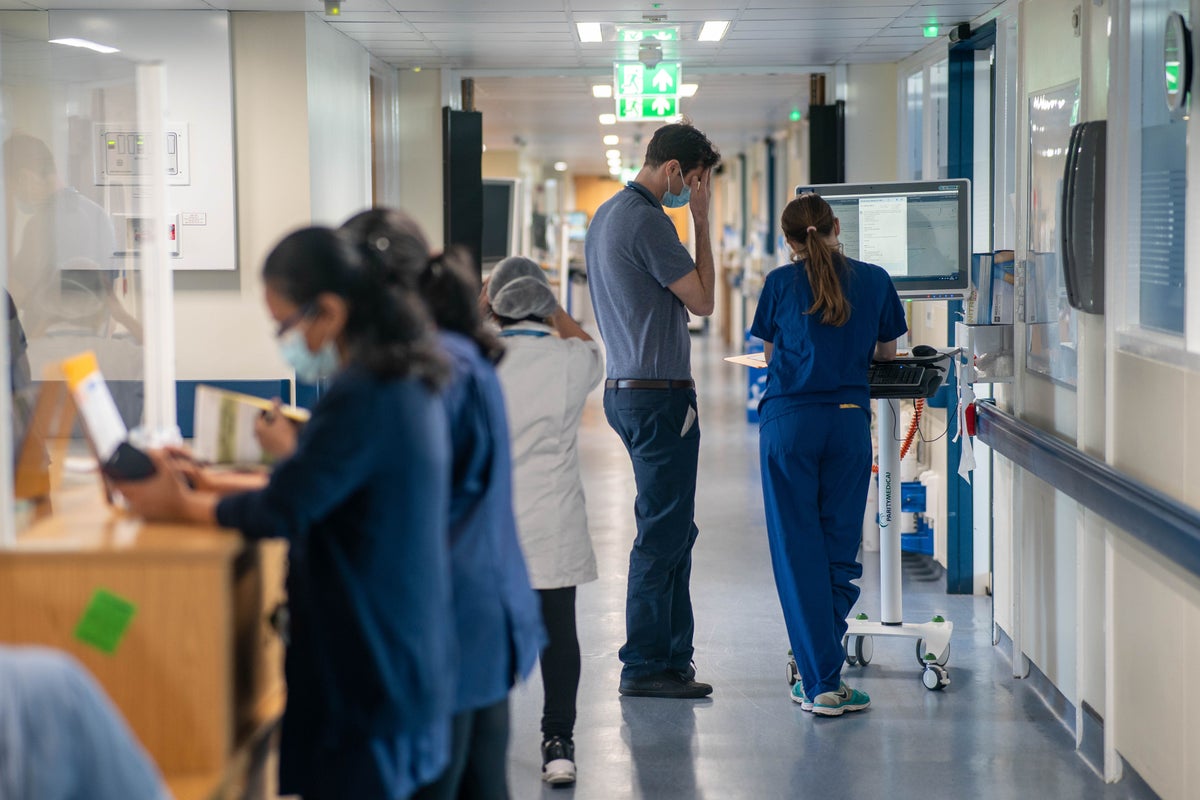
The NHS waiting list in England has hit a new record high, with almost 7.8 million people waiting for treatment, data shows.
An estimated 7.75 million people were waiting to start treatment at the end of August, up from 7.68 million in July. It is the highest number since records began in August 2007.
The waiting list for treatment has been growing for much of the last decade, passing three million in 2014, four million in 2017, five million in 2021 and seven million in 2022.
As the NHS waiting list grows A&E pressures are “ running red hot”, a major think tank has warned, with new figures showing 123,000 patients waited more than 12 hours in emergency departments last month.
In February 2020, the last full month before the start of the Covid-19 pandemic, the waiting list stood at 4.57 million.
Prime Minister Rishi Sunak has made cutting waiting lists one of his priorities for 2023, pledging in January that “lists will fall and people will get the care they need more quickly”.
This week Labour leader Kier Starmer pledged to eradicate the NHS waiting list in England in a single term.
Labour party leader, Sir Keir Starmer delivers the leader’s speech, covered in glitter after a protestor stormed the stage on the third day of the Labour Party conference on 10 October 2023 in Liverpool, England— (Getty Images)
Some 8,998 people in England are estimated to have been waiting more than 18 months to start routine hospital treatment at the end of August, up from 7,289 at the end of July, according to data.
A total of 396,643 people in England had been waiting more than 52 weeks to start routine hospital treatment at the end of August, up from 389,952 at the end of July.
The Government and NHS England have set the ambition of eliminating all waits of more than a year by March 2025.
Ambulances outside Waterloo Ambulance Station in 2022— (PA Wire)
Meanwhile, A&E pressures appear to be worsening as the NHS heads into winter. According to NHS England in September there were 2,165,741 attendances - 8 per cent up on September 2022 - and 522,000 emergency admissions, up 7 per cent.
The number of people waiting more than 12 hours in A&E departments in England from arrival hit 123,870 in September, up from 114,640 in August.
The number waiting at least four hours from the decision to admit has also increased, from 120,120 in August to 125,829 in September, a rise of 5 per cent.
The average response time in September for ambulances in England dealing with the most urgent incidents, defined as calls from people with life-threatening illnesses or injuries, was eight minutes and 31 seconds, NHS figures show.
This is up from eight minutes and 17 seconds in August and is above the target standard response time of seven minutes.
Ambulances took an average of 37 minutes and 38 seconds last month to respond to emergency calls such as heart attacks, strokes and sepsis.
This is up from 31 minutes and 30 seconds in August, while the target is 18 minutes.
Siva Anandaciva, chief analyst at health think tank The King’s Fund, said: “Today’s statistics show the NHS is running red hot as it enters the busy winter period.
“Despite the Prime Minister’s commitment to cut waiting lists, more and more people are now queuing for routine hospital care, with over 396,000 still waiting more than a year for the care they need. A&E departments have had a busy summer and are now facing a punishing winter, and the time taken for an ambulance to reach those people facing an emergency, such as for strokes, is now more than double the target of 18 minutes.”
He also warned the figures don’t cover the recent period of strike action by doctors with official figures showing 1 million appointments have been cancelled since strikes began last year.
As part of plans to tackle winter pressures, NHS England pledged to open 10,000 “virtual wards beds” by September to help discharge patients from hospital earlier.
Stephen Powis, NHS England’s national medical director— (Getty Images)
In an announcement on Thursday, NHS England said this target has now been met.
NHS medical director Professor Sir Stephen Powis said “The NHS is embracing the latest technology, with regular check-ins from local clinicians in daily ‘ward rounds’ while freeing up hospital beds for those that need them most - it is a testament to the hard work and dedication of NHS staff across the country that we have delivered on our target and rolled out more than 10,000 virtual ward beds by the end of September.
“We know that industrial action is also continuing to pile pressure on services and impact capacity adding a lot of pressure to hospitals before winter, coming on top of high levels of demand with last month seeing more 999 ambulance calls than any month this year as well as the busiest September ever for A&E attendances, up almost 8 per cent on the same month last year.”







